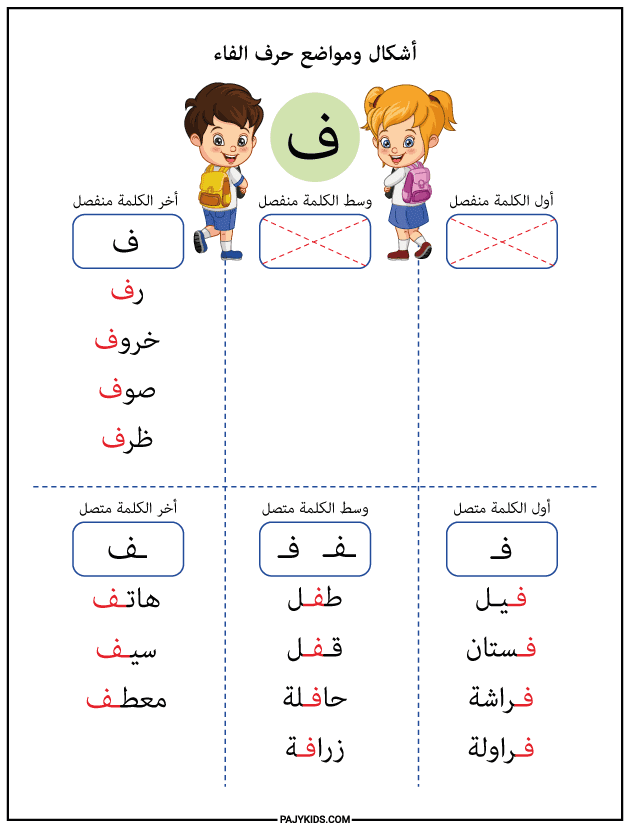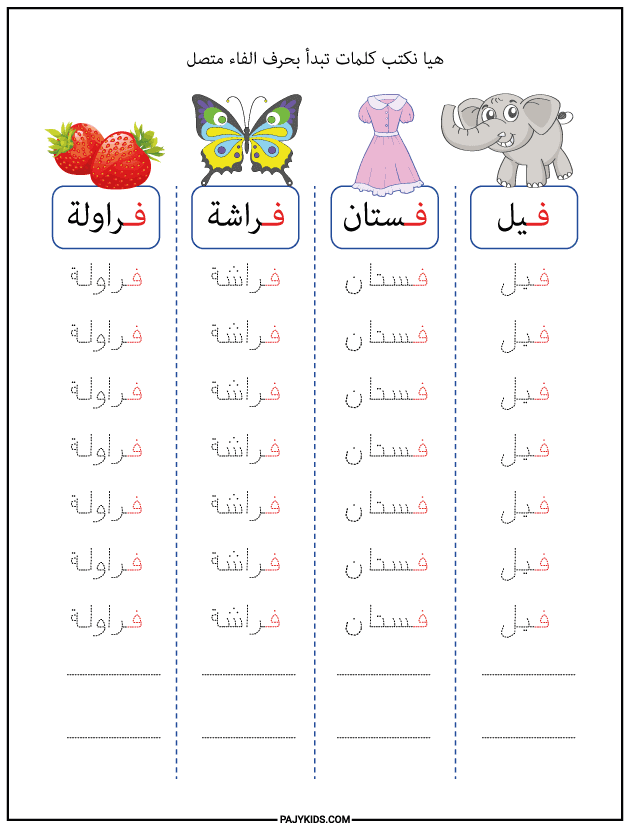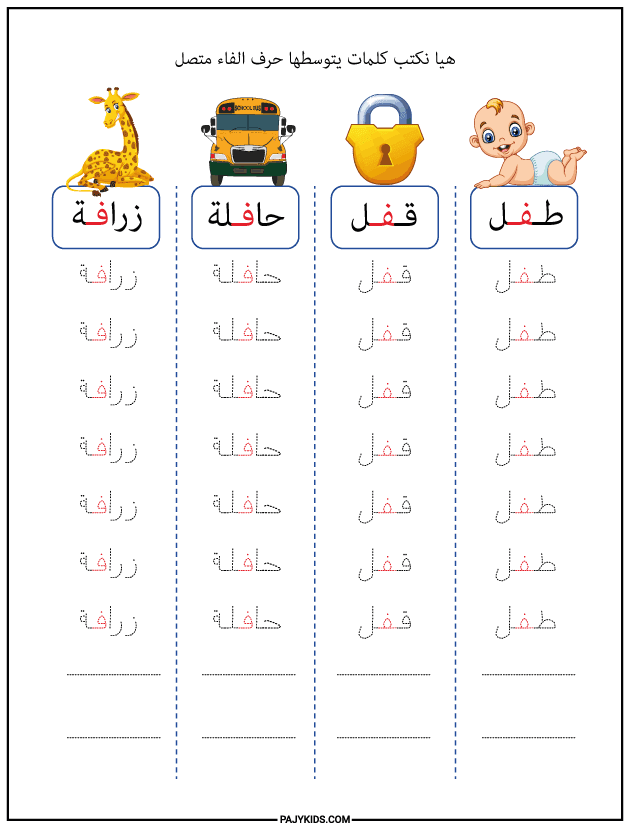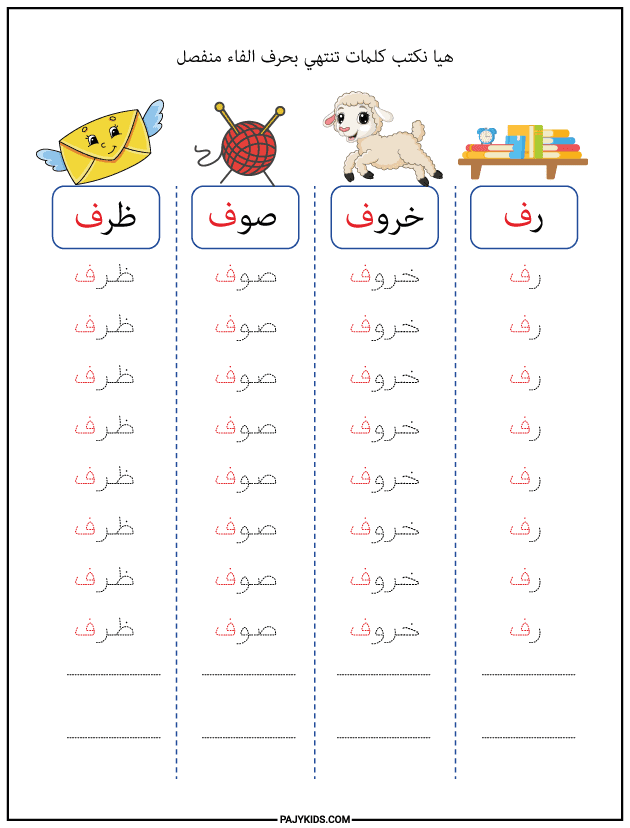Table of contents
The Arabic letter Fa (ف) is one of the important letters in the Arabic language. It is relatively easy to pronounce and write, but its shape changes depending on its position in a word. Understanding the forms of the letter Fa helps students improve their reading and writing skills and is a fundamental step in learning the Arabic alphabet. In this lesson, we will explore the forms of the letter Fa at the beginning, middle, and end of words—both in connected and isolated forms—with illustrative educational examples.
Interactive Exercises on the Forms of the Letter Fa

The Form of the Letter Fa at the Beginning of a Word
When the letter Fa appears at the beginning of a word, it connects only to the following letter and is written like this: “فـ”.
Examples: Feel (فيل), Fahd (فهد), Fustan (فستان), Frawla (فراولة).
This form features a single dot above the letter and begins with a slight downward curve followed by a short horizontal stroke. This is one of the most recognizable forms of the letter Fa, and beginners should practice it extensively.

The Form of the Letter Fa in the Middle of a Word
In the middle of a word, the letter Fa connects to both the preceding and following letters, and is written like this: “ـفـ”.
Examples: Apple (تفاحة), Child (طفل), Lock (قفل), Bus (حافلة).
In this position, the letter blends smoothly with adjacent letters while maintaining its distinctive dot and curved shape. Mastering this version is essential for developing connected writing skills and recognizing the different forms of the letter Fa.

The Form of the Letter Fa at the End of a Word (Connected)
When Fa appears at the end of a word and is connected to the preceding letter, it is written like this: “ـف”.
Examples: Phone (هاتف), Envelope (ظرف), Palm (كف), Sword (سيف), Coat (معطف).
This form stretches along the line and retains its upper dot and characteristic curve. It is one of the practical forms of Fa frequently encountered in daily writing.

The Form of the Fa Letter at the End of a Word (Isolated)
If Fa comes at the end of a word after a letter that does not connect to it, it is written in its isolated form: “ف”.
Examples: Shelf (رف), Sheep (خروف), Wool (صوف), Envelope (ظرف).
In this case, the letter appears on the baseline in its full shape, with the upper dot clearly visible, making it easy for learners to identify visually.

Regular practice with the forms of the Fa builds students’ confidence in writing and helps them distinguish it from similar-looking letters such as Qaf (ق). Understanding the variety of its shapes enhances reading fluency and writing flexibility, especially in early learning stages.